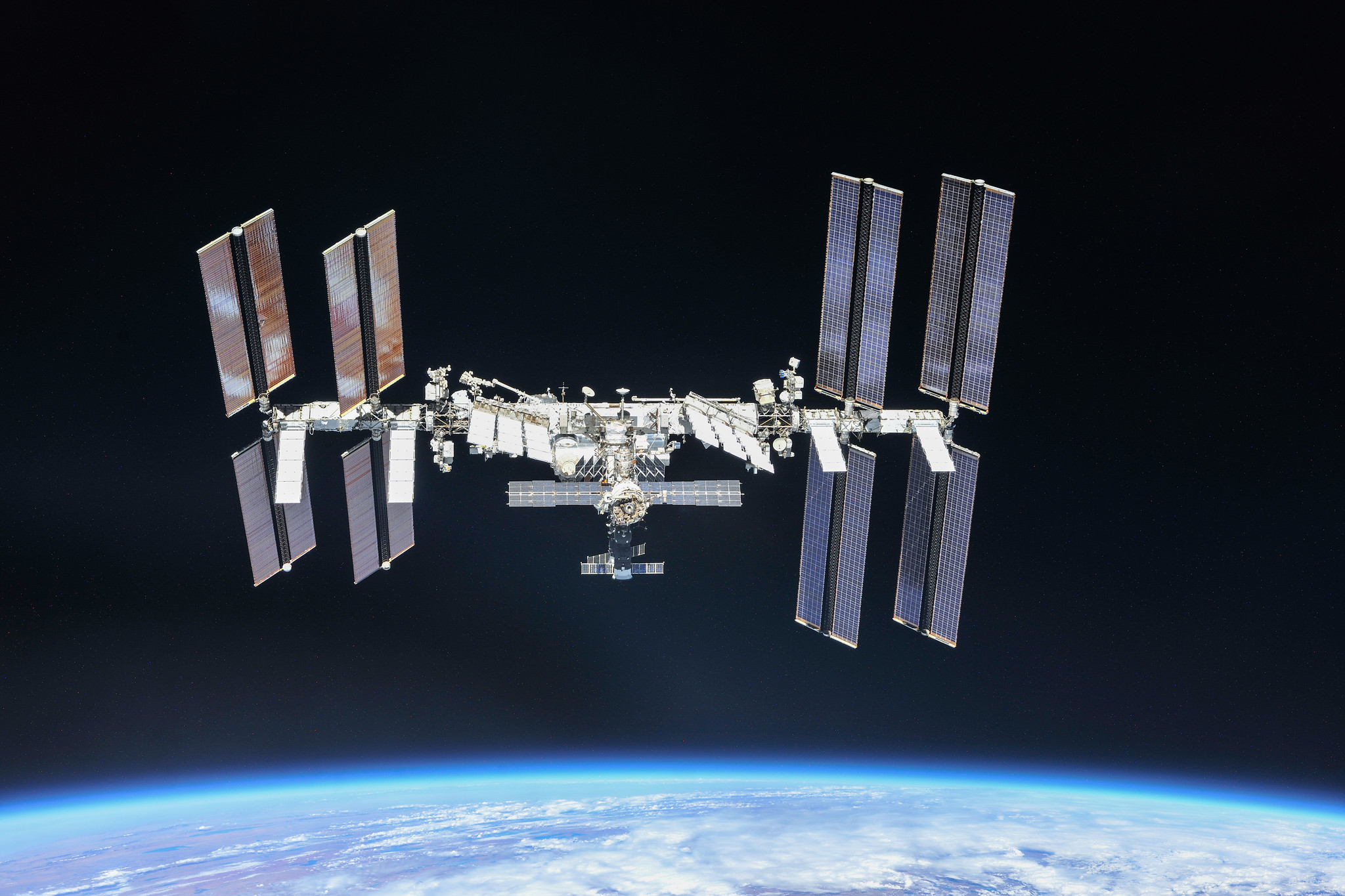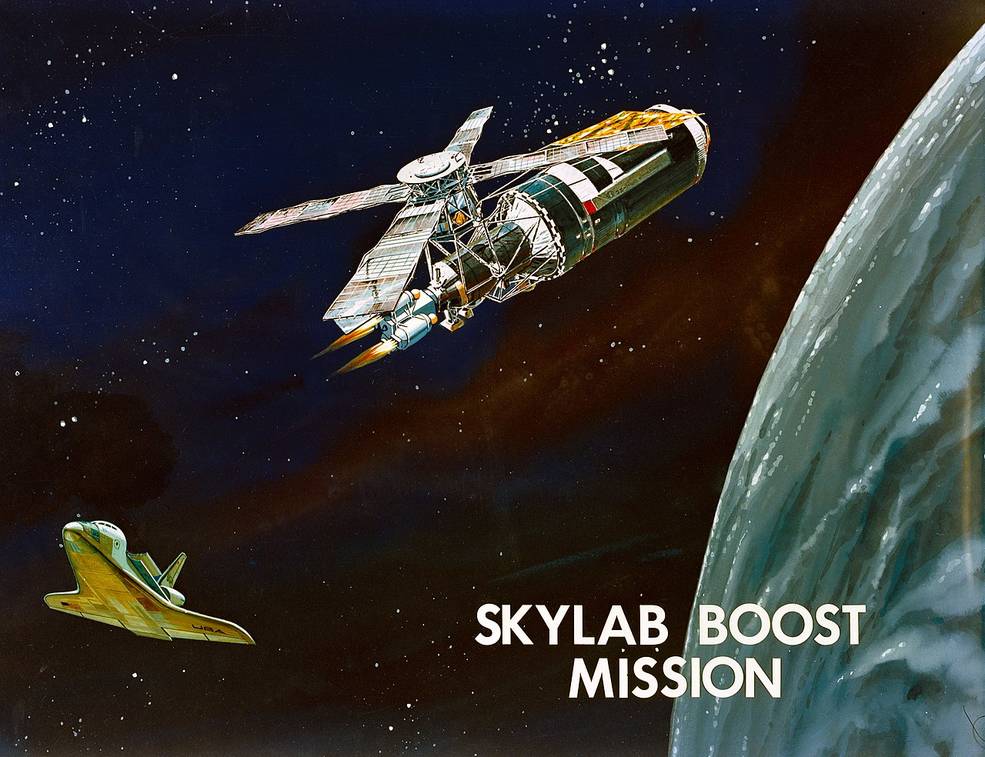The International Space Station will eventually die by fire
It took dozens of launches to get the International Space Station up. What will it take to get it down?

The International Space Station has orbited Earth for more than two decades, but one day, its time will come. And the space station's death will be grizzly: Like all of the most massive spacecraft, it will burn up in Earth's atmosphere.
The massive orbiting laboratory has been a home to astronauts for a fully 20 years, and their visits have taught scientists tons about what it means to venture into the topsy-turvy world of microgravity.
All told, space station construction required 42 separate launches, according to NASA. The facility would weigh over 900,000 lbs. (420,000 kilograms) on Earth, is nearly the length of a football field and boasts as much livable volume as a six-bedroom house, according to NASA.
"We built the largest peacetime engineering project ever, and by building pieces of an overall spacecraft that never actually saw each other or touched each other until they got to orbit." Christian Maender, director of in-space manufacturing and research for Houston-based company Axiom, which is planning on building its own space station, told Space.com. "No one had any idea how to build something like this when we started out on the ISS."
It's huge, it's complicated, and it's practically unbelievable. But the instant human intervention ends, the space station's life is limited.
Related: International Space Station at 20: A photo tour
Why the International Space Station can't stay in orbit forever
Like the rest of us, the International Space Station is aging. That reality is a particular challenge in space, where the laboratory is at constant risk of impacts from space debris and micrometeorites and where even the smallest hiccup can mean disaster.
That said, NASA and other partner agencies regularly evaluate the station's condition with an eye to its longevity. As of now, NASA is confident that the station will remain healthy through 2030, although their last complete analysis looked at the years ending in 2028.
But even if the International Space Station were still in mint condition, it can't stay in orbit on its own indefinitely: It needs a regular boost or fuel injection from visiting spacecraft. If those boosts stop or something else goes wrong, sooner or later, the lab will fall.
"Basically, any cargo ship that comes to the space station, or indeed any ferry ship, usually has surplus propellant to a certain degree," Jonathan McDowell, an astronomer at Harvard who specializes in tracking objects in and falling out of orbit, told Space.com. "They have to have propellant to do the rendezvous, and then they can sometimes have extra to do a reboost."
If those fuel deliveries stop, the space station will be at the mercy of the Earth's gravity and atmosphere. What goes up must come down.
When will the International Space Station end?
Because of the station's international nature — it's a partnership among the United States, Russia, Canada, Japan and the participating nations of the European Space Agency — the decision to retire it will always be based on both engineering and politics. NASA has already committed to keeping the station in orbit until 2030, although its partner agencies have not signed on quite yet.
The eventual fate of the space station has always been a specter for NASA and Roscosmos, Russia's federal space agency, but as time has passed, it has loomed larger on the minds of space experts.
"'Oh, we'll bring it down eventually,' the idea has always been; 'We commit to deorbiting it.' But my sense is that they didn't actually think through the details until about five years ago," McDowell said. "Until then it was like, 'La la la, it's in orbit, we're still building it, we're not going to worry about how to get rid of it.' Which maybe isn't quite the way you should do things."
In a document produced in January 2022 outlining procedures for transiting from the International Space Station to its desired commercial successors, NASA outlined a "nominal scenario" for the station, in which it is carefully lowered through the atmosphere by the end of 2030.
The peril of letting the International Space Station die naturally

Although the afterlives of spacecraft weren't much of a concern when the International Space Station was being designed, its eventual demise didn't go completely unconsidered.
That's because just a few years earlier, in 1979, NASA's Skylab station fell out of orbit. The agency had planned to give the station a boost using an early flight of the space shuttle. But that vehicle was delayed, leaving the 80-ton Skylab stranded even as solar activity picked up, warmed and expanded Earth's atmosphere, and thereby accelerated the facility's doom.
Related: The biggest spacecraft ever to fall uncontrolled from space
As a result, the spacecraft fell on its own, out of control, leaving no way for NASA to target the pieces over remote areas or slow the spacecraft's descent enough to reduce the size of those pieces. Instead, chunks of the station scattered across Australia, the largest of them a massive oxygen tank. The incident was a turning point in how people think about how large objects leave orbit.
"In the early days of the space age, no one worried about it. Big thing falling out of the sky, no big whoop," McDowell said. "People have gotten more and more risk-averse over the years." And the longer spaceflight continues, the more experts worry about abandoned orbital debris, particularly the largest of it.
The risk if the space station does fall to Earth on its own is significant, McDowell argued. At about 400 tons, the space station is by far the heaviest human-made object ever to circle Earth. The larger an object is, the less likely the atmosphere is to be able to fully burn it up. And because of the space station's outstretched solar arrays, it's vulnerable to spinning out of control, at which point rescue options would be limited, McDowell said.
No matter what led to an uncontrolled entry, the results would not be pretty, he said, although not nuclear-catastrophe-level grim. It would be more like a plane crash, although with debris spread over a much broader area. "Worst, worst case, I guess it's a 9/11, right?" McDowell said. "Because it's at worst case a plane crashing, part of which is in a populated area. And that's bad. But it's not asteroid-hit bad."
How to destroy a space station (safely!)
So how to control the space station's reentry?
A group of engineers from NASA and Roscosmos presented a paper evaluating some disposal options at the 2017 International Astronautical Congress. Their work is based on deorbit procedures conducted on the Russian space station Mir in 2001; the International Space Station is about three times heavier.
But the gist of the plan mirrors how the space station retains its altitude during normal operations. Most commonly, a Russian Progress cargo vehicle will either conduct a burn while docked to the station or transfer fuel into the main service module's thrusters to fuel the station's own burn; either way, the station climbs.
In a controlled deorbit, Progress vehicles would do the same thing but in the reverse direction, lowering the station's lowest altitude. Depending on the precise array of spacecraft at hand, the service-module thrusters could also be used. In the 2022 transition report, NASA officials wrote that deorbiting the station would require three Progress spacecraft, although it is also analyzing whether Northrop Grumman's Cygnus spacecraft might be able to assist.
These carefully timed burns would maneuver the station lower at only one point in its orbit, making the re-entry more predictable and allowing managers to target the debris to the vast, sparsely populated southern Pacific Ocean. The rest is up to the destructive power of Earth's atmosphere. The strategy, unsurprisingly, has its risks. If something knocks a burn off schedule, well, there goes the predictability.
The 2017 paper lays out options both for a scheduled deorbit and in response to a potential catastrophe on the space station. If something suddenly goes unfixably wrong on the orbiting laboratory, the organizations behind the facility will have just two weeks to decide how to proceed, the group wrote.
How will future space stations end?
The International Space Station's successors may face smoother retirements — although these, too, will be fiery.
For example, Texas-based Axiom Space is planning to launch new station modules in a couple of years and, as commercial interest in accessing orbit grows and the ISS ages, eventually split off from the International Space Station to form its own freeflying orbital facility.
But Axiom has learned from the space station's complicated fate and has already wrestled with how its facility will end. The company is planning its modules to be more truly modular than those on the space station, with the capability to easily remove and replace segments anyway, giving the company flexibility in its future.
The arrangement also means that each module can control its own fate. "Each module is going to be designed with its own guidance, navigation and control, its own thruster capabilities," Maender said. "So they can fly essentially on their own, and then when they need to, they can separate and return through Earth's atmosphere on their own."
Additional resources and reading
Visit NASA's hub page detailing the construction of the International Space Station. In addition, this video recaps the first 15 years of space station construction. The Guardian and Popular Science both have great stories about the patch of the Pacific Ocean where the station's remains will fall if all goes well.
Bibliography
- Murtazin, R., et al., "ISS Controlled Deorbit: Challenges and Solutions," September 2017. https://www.researchgate.net/publication/340902025_ISS_CONTROLLED_DEORBIT_CHALLENGES_AND_SOLUTIONS
- NASA, "International Space Station Facts and Figures," Nov. 4, 2021. https://www.nasa.gov/feature/facts-and-figures
- NASA, "International Space Station Transition Report," January 2022. https://www.nasa.gov/sites/default/files/atoms/files/2022_iss_transition_report-final_tagged.pdf
Join our Space Forums to keep talking space on the latest missions, night sky and more! And if you have a news tip, correction or comment, let us know at: community@space.com.
Get the Space.com Newsletter
Breaking space news, the latest updates on rocket launches, skywatching events and more!

Meghan is a senior writer at Space.com and has more than five years' experience as a science journalist based in New York City. She joined Space.com in July 2018, with previous writing published in outlets including Newsweek and Audubon. Meghan earned an MA in science journalism from New York University and a BA in classics from Georgetown University, and in her free time she enjoys reading and visiting museums. Follow her on Twitter at @meghanbartels.










